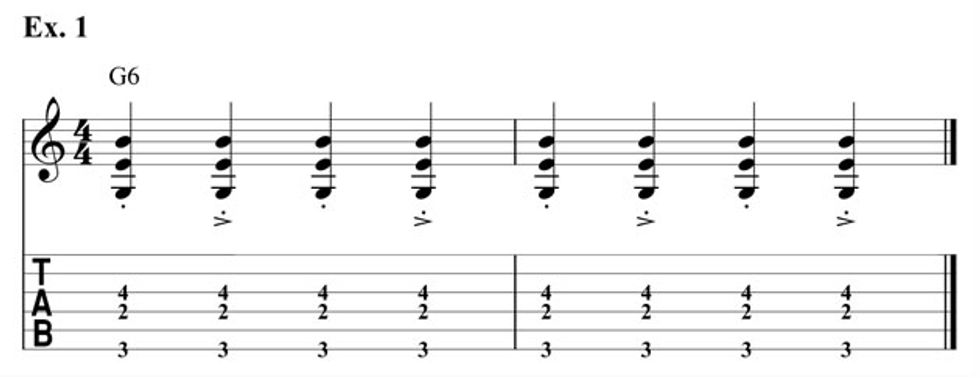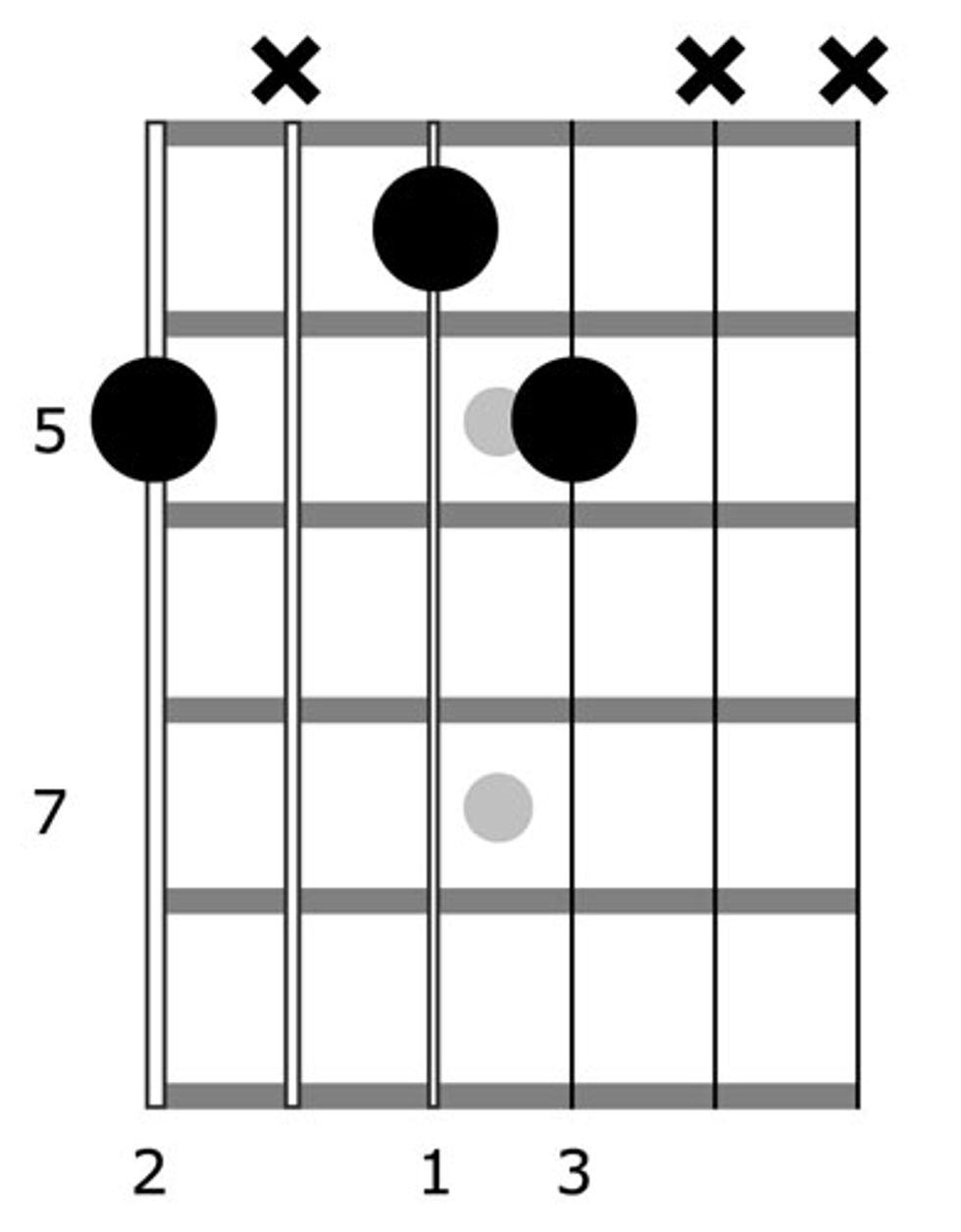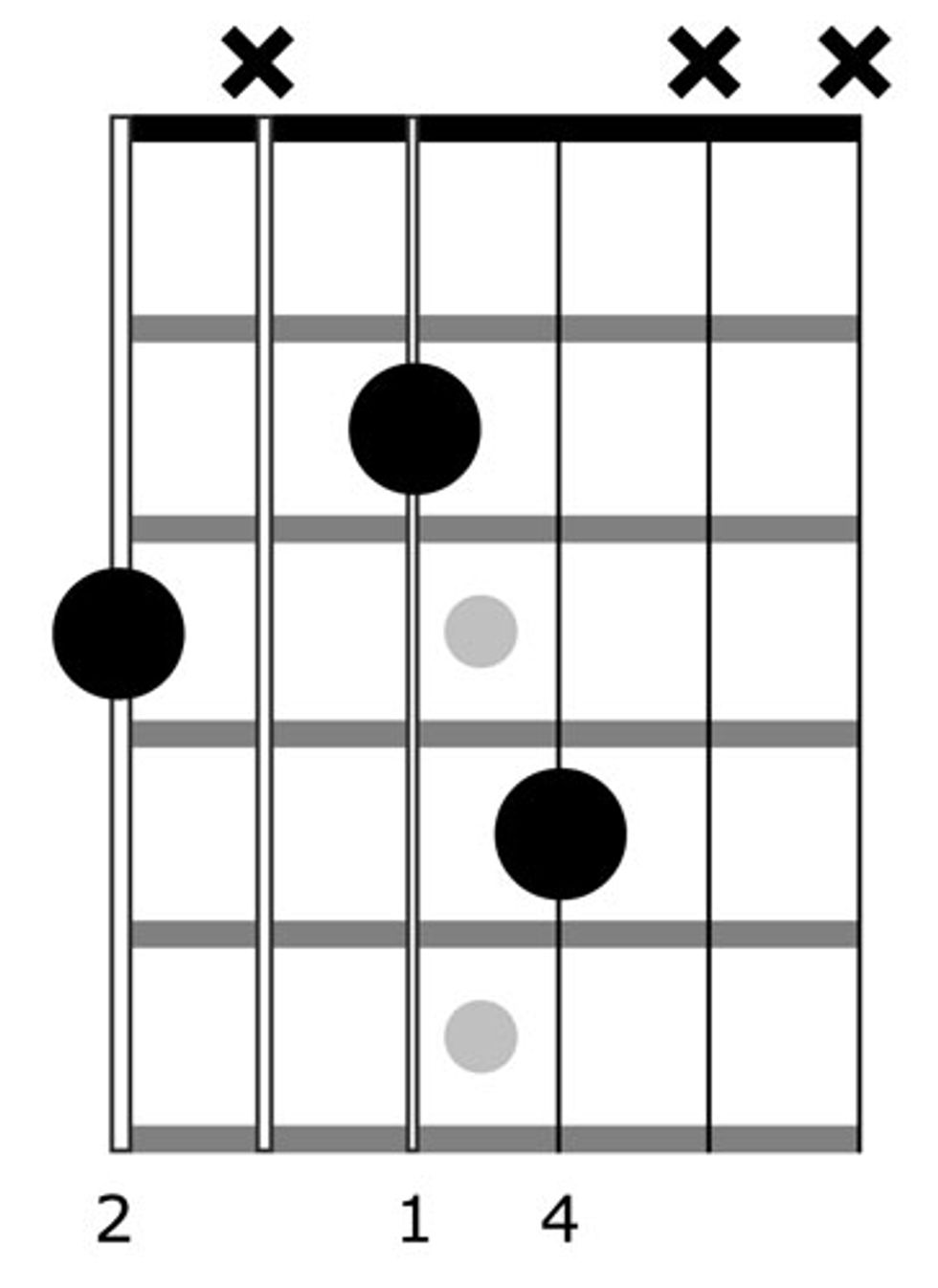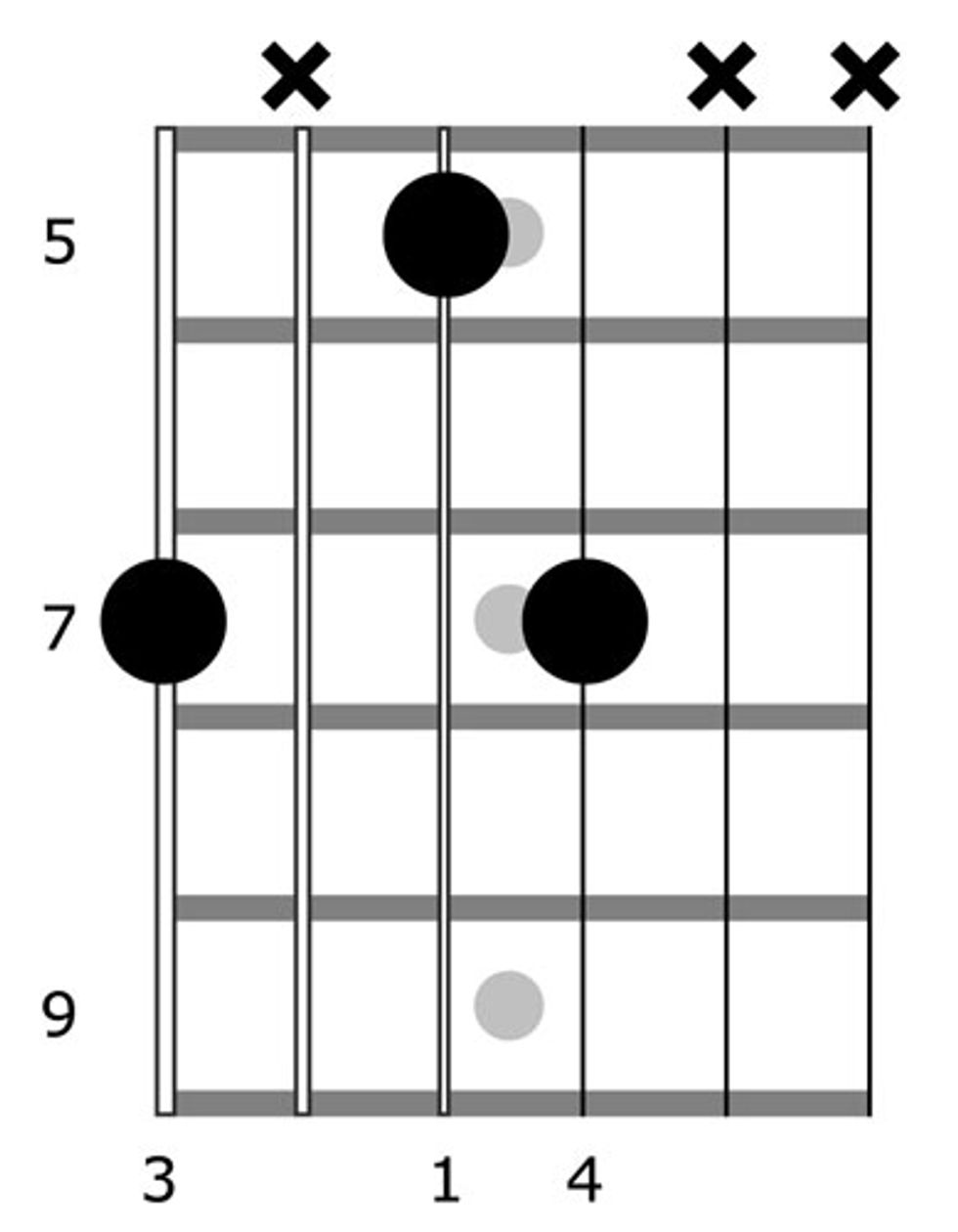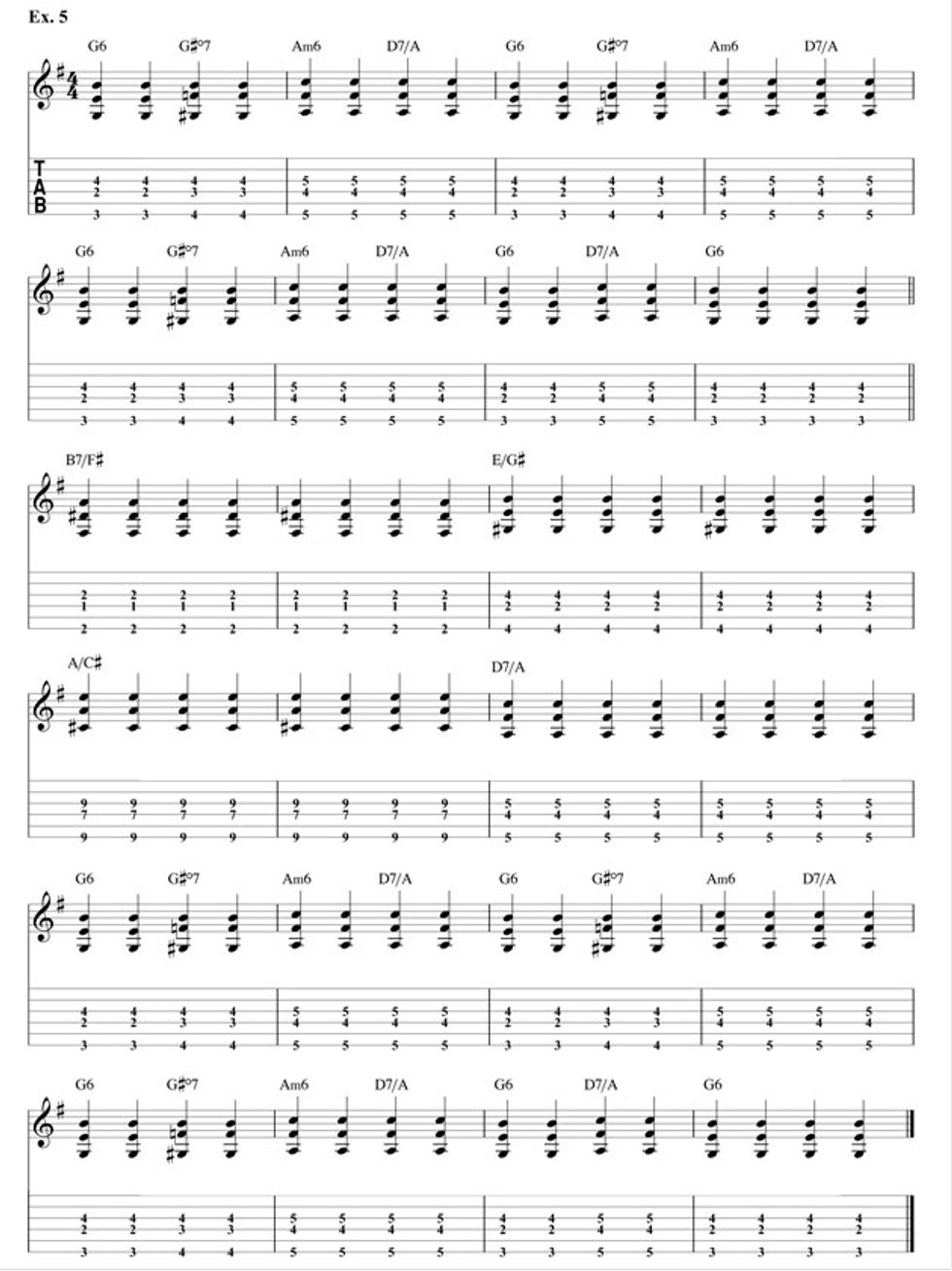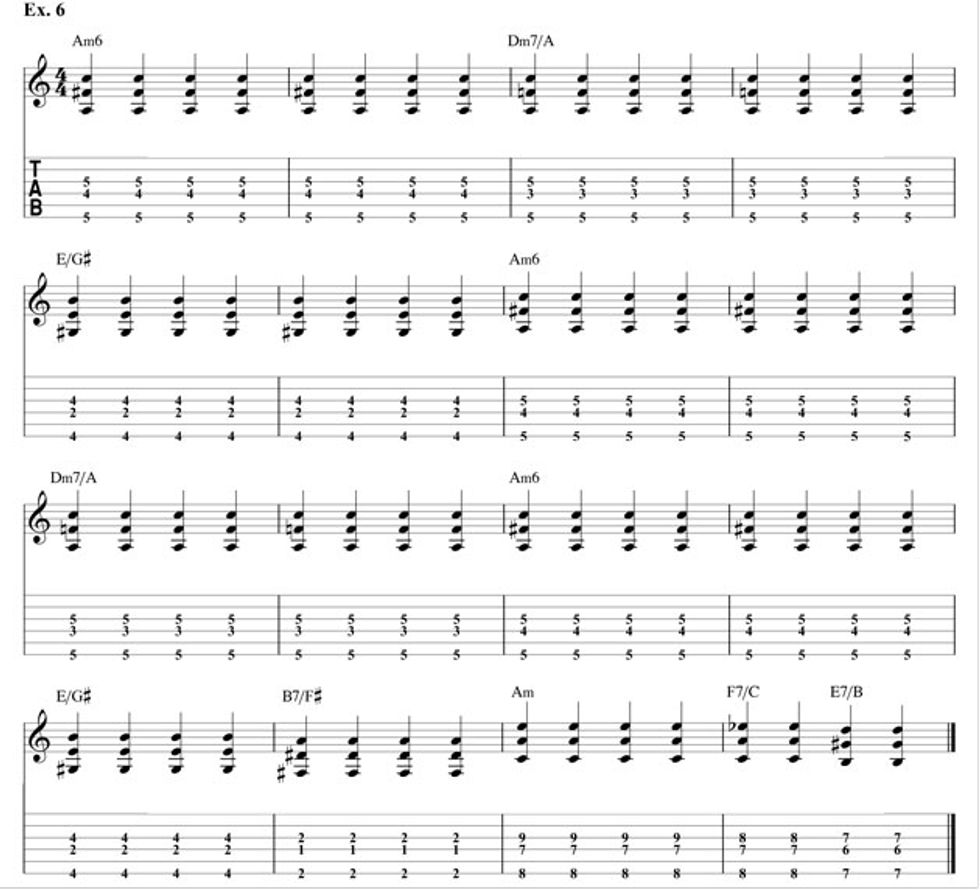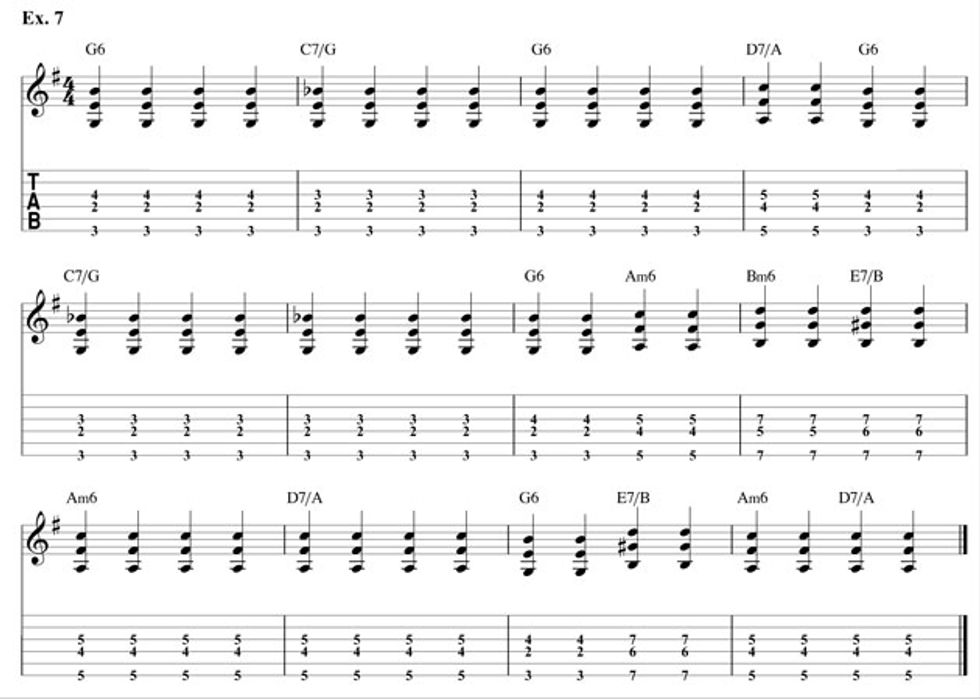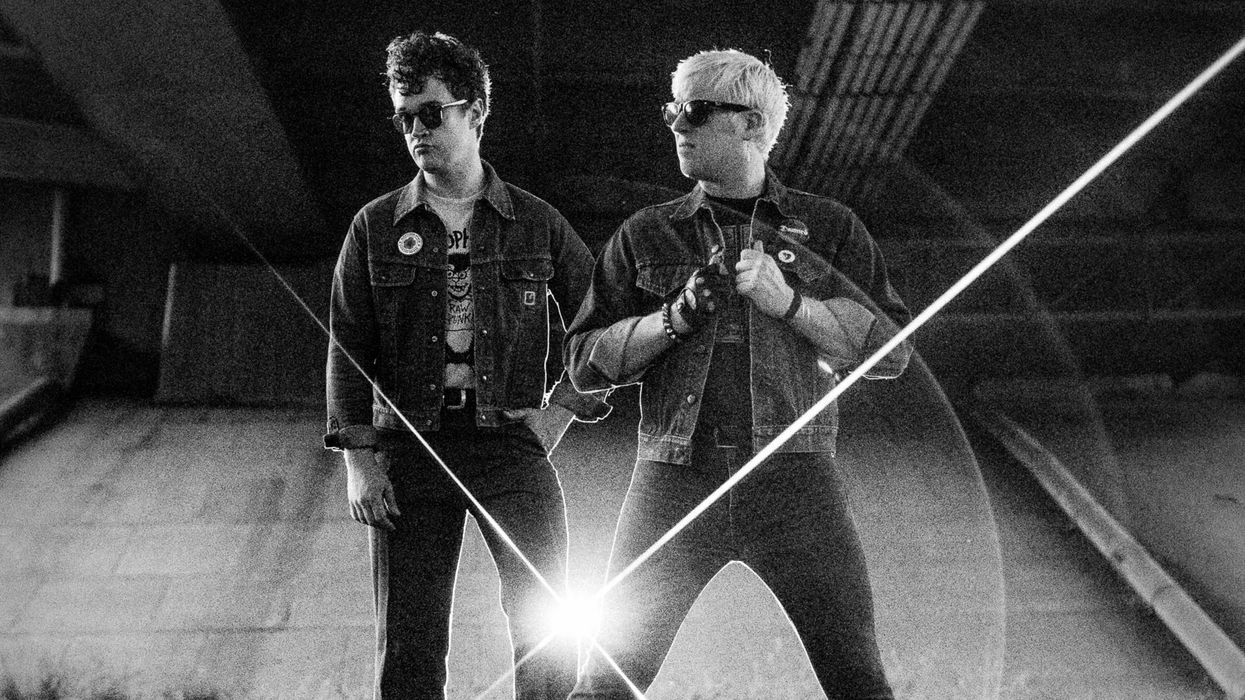Chops: Beginner
Theory: Intermediate
Lesson Overview:
• Learn about la pompe strumming.
• Understand how one chord voicing can serve many purposes.
• Play the changes to Django’s classic “Minor Swing.”
Click here to download a printable PDF of this lesson's notation.
For most people, Gypsy jazz brings to mind the agile, single-note solos emanating from Django Reinhardt’s Selmer-Maccaferri guitar. But Django’s rhythm playing is just as essential, if not more so, to the Gypsy jazz style. In this lesson, I’ll give you a quick overview of the basics of Gypsy jazz rhythm guitar and introduce you to what I call the “magic” chord. Before we get to that though, it’s imperative that we discuss the strum pattern known as la pompe, which is French for “the pump.”
Ex. 1 illustrates the most basic la pompe pattern, which is four staccato downstrokes per measure, with a slight emphasis on beats two and four. For this example I’ve used a Django-esque G6 chord. I’ve also included audio of the exact same rhythm enhanced with a quick upstroke before beats one and three. This little addition creates a whole new feel.
There are countless variations on la pompe—including many regional differences, such as Parisian, German, and Dutch—but for the remainder of the lesson my recorded examples will contain a combination of these two versions.
Now comes my favorite part of this lesson: Ex. 2 shows one chord shape, but due to the unique choice of notes, this shape can function in six different ways. Without getting too heavy on the theory, this “magic” chord is fundamentally an Am6. But it can also be heard as a D7/A (no root), Adim, F#dim, Cdim, and D#dim (no root). Needless to say, this is a very versatile chord!
And it keeps getting better. The chord below in Ex. 3 demonstrates how you can make three more chords just by moving the note on the 3rd string up one fret. Then Ex. 4 gives us three more practical chords by taking our original shape and moving the note on the 4th string down one fret.
Ex. 3
Ex. 4
Please note that for practical purposes I’ve fretted Ex. 3 and 4 in different positions, though the shapes refer back to our original chord.
Okay, now that we have our three shapes—and many different chords—let’s put them to use. Ex. 5 is a basic “Rhythm” changes progression, over which Django played many of his original melodies, such as “Swing 42” and “Swing Guitar.” (For more on “Rhythm” changes, see "The Evolution of Rhythm Changes") Super fun to play, and with so few chord shapes involved, you can play this very fast!
Check out Ex. 6, which is the progression to the Django and Stéphane Grappelli classic, “Minor Swing.”
And finally in Ex. 7, we have a Gypsy jazz rhythm variation on a 12-bar blues. This isn’t necessarily something Django would have played, but I thought many guitarists out there might find it useful.
So the next time you hear some smokin’ Gypsy jazz guitar playing, I would take a minute to think about what really gives the style it’s overall sound and feel. Sure, Django’s licks and runs are awesome, but even without those single-note lines, the rhythm section rocks!


